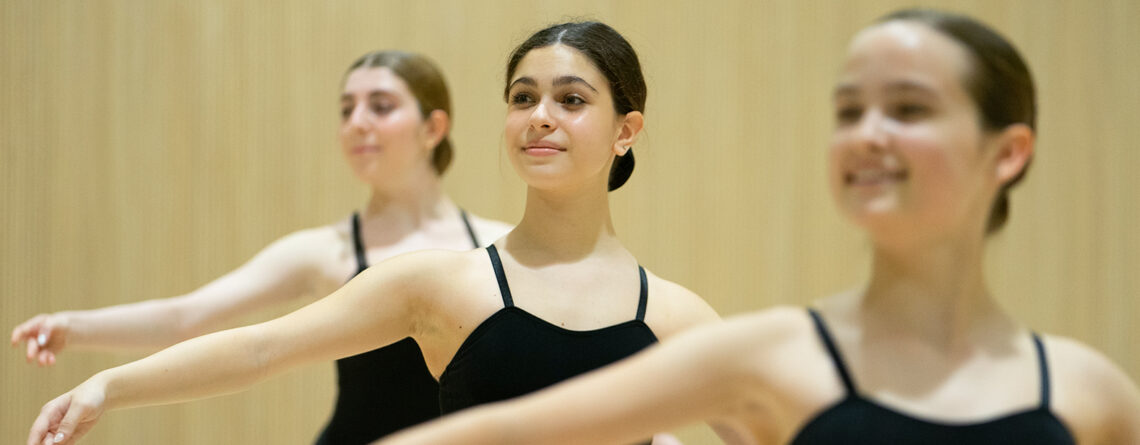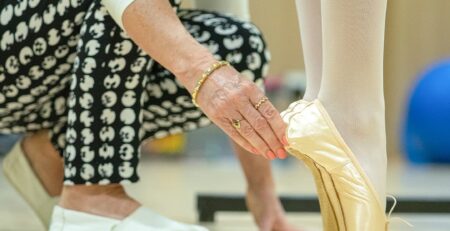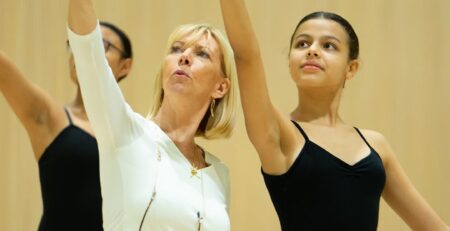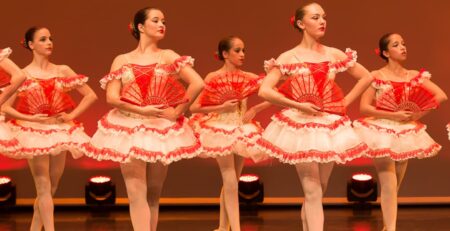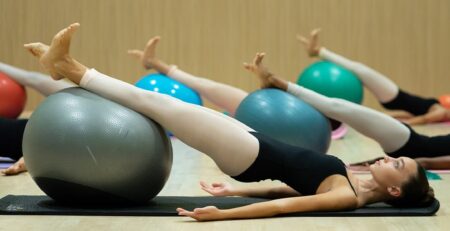What is ballet dance?
Have you ever wondered what makes ballet dance so captivating and graceful? Maybe you’ve always been curious about how ballerinas balance on their toes or create such beautiful lines with their bodies. If this is the case, you have come to the right place! Ballet dance is an art form that combines elegance, strength, and precision, and it’s a joy to watch and perform.
This comprehensive guide will explore everything you need to know about ballet dance, from its origins and techniques to finding beginner classes in Dubai. So grab a cup of tea and get ready to dive into the magical world of ballet!
What is Ballet Dance?
Ballet dance is a highly technical and precise form of dance that originated in Italy during the Renaissance period. Fluid, graceful movements, precise footwork, and a focus on balance, alignment, and posture characterise it. Ballet dance requires years of training and practice to master, and it is often considered one of the most challenging dance forms.
What Type of Dance is Ballet?
Ballet is a classical dance that has evolved from the Italian Renaissance courts over several centuries. Its unique movement style combines graceful and flowing motions with precise footwork and pointe work, where dancers balance on the tips of their toes.
Ballet is renowned for its demanding techniques, such as the five basic positions, pirouettes, and grand jetés, that require years of practice to perfect. As the foundation for many other dance forms, ballet’s influence on the dance world is immeasurable.
Ballet Dance Classes In Dubai and Abu Dhabi
If you’re looking for a place to learn ballet’s beautiful and graceful art, Turning Pointe UAE is the perfect place. We offer a wide range of ballet classes for students of all ages and skill levels. Our experienced and highly qualified teachers are passionate about sharing their love of ballet with others, and we strive to provide a fun and engaging learning environment for everyone.
Turning Pointe’s Ballet Classes
The syllabus we use for our ballet classes follows the Royal Academy of Dance (RAD). We believe in starting our little ballerinas off young, with classes beginning at three years old and going up to 19 years old. Our syllabus includes lots of mime, imagery, and music to help our little ones develop a love for dance.
For older students, we offer a variety of classes to suit different needs and skill levels. Below are some of the classes that we provide:
- Ballet for Adults: Whether you’re new to ballet dance or looking to improve your technique, our adult ballet classes are a great place to start. We focus on building strength, flexibility, balance, grace, and poise.
- Ballet for Kids: Our kids’ ballet classes are perfect for children interested in ballet dance. We teach the basics of ballet technique in a fun and engaging way while also helping kids build confidence and self-esteem.
- Pointe Class: For advanced ballet dancers who have mastered the basics of ballet technique, our pointe class is designed to take your skills to the next level. We focus on developing the strength and technique needed to perform pointe work.
Turning Pointe’s Vocational Program
For talented dancers, we offer a program of Vocational Classes geared toward professional examinations. Our staff is experienced in successfully coaching students through rigorous international auditions and assisting with applications to Vocational Full Time schools and colleges in the UK, Australia, and the US. We’re committed to helping our students succeed in their dance careers and take pride in seeing them achieve their dreams.
Ballet Dance Classes for Beginners
Experience the grace and beauty of ballet dance with Turning Pointe’s new ballet classes for adults. Whether you’re a beginner or looking to refresh your skills, our classes offer a supportive and engaging environment to develop your technique and artistry. Here are some things to expect in our beginner ballet classes:
- Warm-up: Classes typically begin with a warm-up to prepare your body for the demands of the class. It includes exercises to increase flexibility, improve posture, and align your body properly.
- Technique: Our experienced teachers will guide you through basic ballet techniques such as pliés, tendus, and relevés. You’ll learn proper form and how to execute movements with grace and control.
- Progression: As you continue to attend classes, you’ll progress to more advanced techniques such as pirouettes, jumps, and lifts. Our teachers will help you build the strength and skill to execute these movements confidently and gracefully.
- Community: Besides the physical benefits of ballet dance, our classes provide a supportive and welcoming community. You’ll be able to meet new people, make friends, and develop your passion for dance.
Ready to try out a class? Register for a free trial at Turning Pointe and discover the joy and artistry of ballet dance.
Ballet Dance Poses
Dance poses of ballet are essential movements that every ballet dancer must master to convey grace, poise, and elegance. Below are some of the most common dance poses that you should know:
- Plie: This is a fundamental movement in ballet that involves bending and straightening the knees. It is often used as a warm-up exercise and helps to improve flexibility, strength, and balance.
- Tendu: This movement involves extending the foot from the body in front or behind. It helps to improve leg strength, flexibility, and balance. The tendu is usually performed before a grand battement or a pirouette.
- Relevé: This movement starts from a demi-plié, and then the dancer rises onto the demi-pointe (the ball of the foot). This is a strong movement with the balls of the foot replacing the position the heels were in. It requires strength and balance control from a dancer.
- Arabesque: This pose involves the dancer standing on one leg, extending the other behind them, and extending their arms. It is one of the most iconic and beautiful ballet poses, requiring a lot of strength, balance, and flexibility to execute correctly. Classical ballet often uses Arabesque as a finishing pose or transitional movement.
- Attitude: This pose involves the dancer standing on one leg with the other leg bent and lifted either in front or behind them. The knee is bent at an angle of 90 degrees and well turned out so that the knee is higher than the foot. The arms are usually extended in a graceful position to complete the pose.
- Grand Battement: This is a high kick movement where the dancer lifts one leg as high as possible and then brings it back to the ground. It is often used to showcase leg strength, flexibility, and control.
- Pirouette: This is a turn where the dancer rotates their body on one leg while the other is either extended or tucked in. It requires excellent balance, coordination, and technique to execute successfully.
Mastering these dance poses requires a lot of practice, patience, and dedication. However, with time and effort, you can improve your technique and master these movements to achieve a graceful and elegant ballet performance.
The Techniques of Ballet Dance
Ballet dance is known for its precise and technical movements, which require years of training and practice to master. Here are some of the key techniques and principles that form the foundation of ballet dance:
The Five Basic Positions of the Feet
The five basic positions of the feet are fundamental to ballet dance technique. They form the basis for many movements and steps in ballet dance and help develop strength, flexibility, and balance. Here is a summary of the five positions:
- First position: Heels together, toes turned out
- Second position: Feet shoulder-width apart, toes turned out
- Third position: One foot in front of the other, heel to arch
- Fourth position: Place one foot in front of the other, aligning the heels with each other
- Fifth position: Feet crossed, heel to toe
The Importance of Alignment and Posture
Alignment and posture are critical to ballet dance technique. Proper alignment helps to prevent injury and ensures that movements are executed correctly. Posture also plays a key role in conveying the grace and elegance of ballet dance. Here are some tips for maintaining proper alignment and posture:
- Keep your shoulders down and relaxed
- Engage your core muscles to provide support for your spine
- Ensure that your hips are level and facing forward
- Lengthen your neck and gaze forward
The Principles of Turnout and Pointe Work:
Turnout and pointe work are ballet dance’s most recognisable and challenging aspects. Turnout refers to the outward rotation of the legs from the hip socket, used to achieve ballet dance’s graceful, flowing movements.
Pointe work involves dancing on the tips of the toes, which requires tremendous strength, balance, and technique. Here are some key principles of turnout and pointe work:
- Turnout should be achieved from the hip socket, not the knee or ankle
- Pointe work should only be attempted by advanced dancers who have the necessary strength and technique
- Pointe shoes should be properly fitted and broken in before use
- Pointe work requires a great deal of preparation and conditioning to prevent injury.
Conclusion
So, what is ballet dance? It is a form of dance that combines grace, elegance, and technical precision. It requires years of training and practice to master, but the result is a beautiful and expressive art form that can be enjoyed by dancers and audiences alike. Whether you’re a beginner or an experienced dancer, ballet dance has something to offer everyone. So why not try it and see where your journey takes you?


